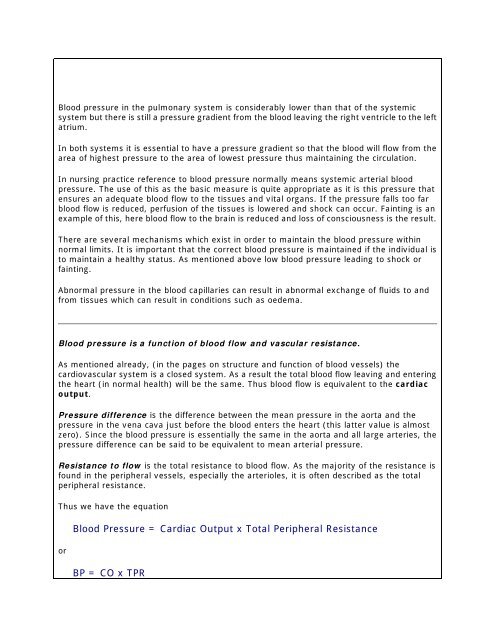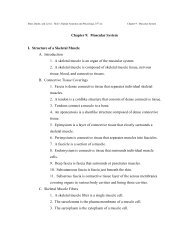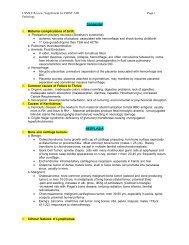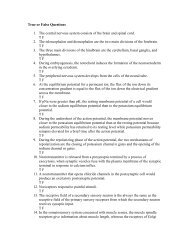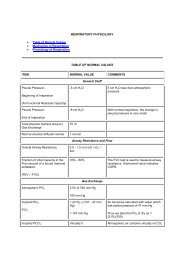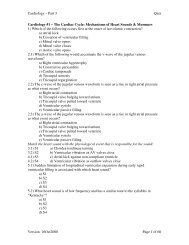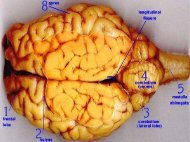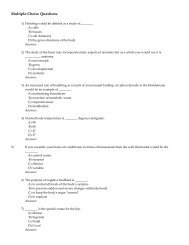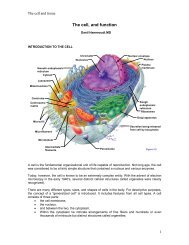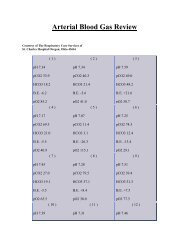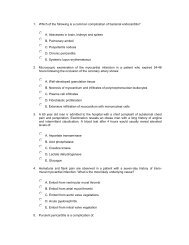Blood Vessels - Sinoe medical homepage.
Blood Vessels - Sinoe medical homepage.
Blood Vessels - Sinoe medical homepage.
You also want an ePaper? Increase the reach of your titles
YUMPU automatically turns print PDFs into web optimized ePapers that Google loves.
<strong>Blood</strong> pressure in the pulmonary system is considerably lower than that of the systemicsystem but there is still a pressure gradient from the blood leaving the right ventricle to the leftatrium.In both systems it is essential to have a pressure gradient so that the blood will flow from thearea of highest pressure to the area of lowest pressure thus maintaining the circulation.In nursing practice reference to blood pressure normally means systemic arterial bloodpressure. The use of this as the basic measure is quite appropriate as it is this pressure thatensures an adequate blood flow to the tissues and vital organs. If the pressure falls too farblood flow is reduced, perfusion of the tissues is lowered and shock can occur. Fainting is anexample of this, here blood flow to the brain is reduced and loss of consciousness is the result.There are several mechanisms which exist in order to maintain the blood pressure withinnormal limits. It is important that the correct blood pressure is maintained if the individual isto maintain a healthy status. As mentioned above low blood pressure leading to shock orfainting.Abnormal pressure in the blood capillaries can result in abnormal exchange of fluids to andfrom tissues which can result in conditions such as oedema.<strong>Blood</strong> pressure is a function of blood flow and vascular resistance.As mentioned already, (in the pages on structure and function of blood vessels) thecardiovascular system is a closed system. As a result the total blood flow leaving and enteringthe heart (in normal health) will be the same. Thus blood flow is equivalent to the cardiacoutput.Pressure difference is the difference between the mean pressure in the aorta and thepressure in the vena cava just before the blood enters the heart (this latter value is almostzero). Since the blood pressure is essentially the same in the aorta and all large arteries, thepressure difference can be said to be equivalent to mean arterial pressure.Resistance to flow is the total resistance to blood flow. As the majority of the resistance isfound in the peripheral vessels, especially the arterioles, it is often described as the totalperipheral resistance.Thus we have the equationor<strong>Blood</strong> Pressure = Cardiac Output x Total Peripheral ResistanceBP = CO x TPR


